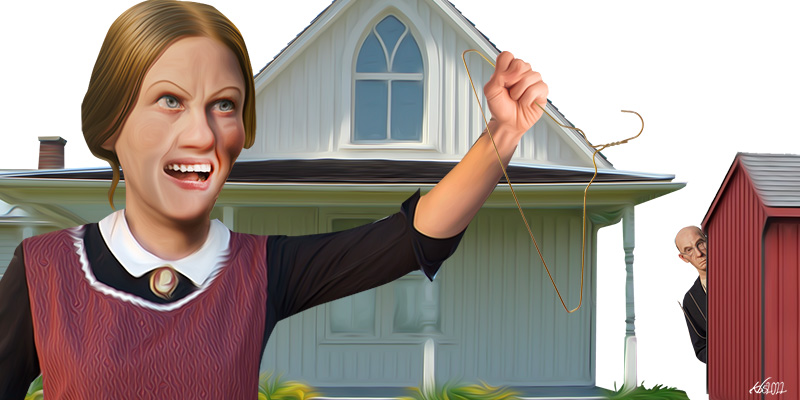In 2014, Belgian documentary artist Max Pinckers was invited to the Archive of Modern Conflict in London, where he came across a collection of British propaganda material relating to the 1950s “Mau Mau Emergency Crisis” in Kenya. Since then he has been working with various Mau Mau War Veterans Associations in Kenya, with a particular focus on using photography to (re-)visualize the fight for independence from their personal perspectives. This includes mass graves, former detention camp buildings, locations of former mobile gallows, cave hideouts, oral witness testimonies, portraits and demonstrations of personal experiences.
This ongoing documentary project titled Unhistories departs from the Hanslope Disclosure in which British colonial archives were destroyed, hidden and manipulated. Known as Operation Legacy in the 1950s, the British colonial administration in Kenya destroyed much of the documentation relating to the Emergency prior to their departure in 1963. Unhistories is a collaboration with Mau Mau veterans, Kenyans who survived the colonial violence, historians, artists, activists, writers, archives, universities and museumsto fill in the missing gaps of the archives.
This third part of the Unhistories series covers some of the figures who shaped the fight on both sides among Kenyans and the British, and introduces members from the Mau Mau War Veterans Association and their stories.
Field Marshal Muthoni wa Kirima after emerging from the forest in 1963 to lay down arms at the flag of free Kenya at Ruringu Stadium, Nyeri, Kenya.
Field Marshal Muthoni wa Kirima
Muthoni wa Kirima (b.1930) attained the rank of Field Marshal. She entered the Aberdare Forest in 1952 and was never caught, although she still has a bullet lodged in her hand. She was nicknamed “Nina wa Thonjo” (weaver bird) by Dedan Kimathi because of her ability to weave brilliant war strategies. She was one of the last Mau Mau who laid down their arms at the flag of free Kenya at Ruringu stadium in 1963, where she met Jomo Kenyatta.
She still has the same dreadlocks she had when fighting in the forest, which she calls “the history of Kenya.” They are a symbol of her dissatisfaction with the new governments and she vows only to cut them when the deserved compensation is given to the Mau Mau veterans.
“I emerged from the forest after eleven years but was never given even an inch of land. I have nothing to show for those eleven years, not even a needle. It was only the sons of the supporters of the white men who benefited from the blood and sweat of our battered bodies.”
“I am still in the forest,” she says. She wants the “protruding bones of fallen heroes in shallow graves in Mt Kenya forests” collected and buried honorably. “The bones of my fellow freedom fighters are, like me, crying in the forests. We ventured into the forests to free the country from the grip of the white settlers. We thought that those we left behind schooling would fight for us, but things turned out differently.” The erasure of Muthoni and others like her from Kenya’s history books depresses her as she sites how unfortunate it is that “only white people” visit her inquiring about her story.

Field Marshal Muthoni wa Kirima at her home with her grandson Bernard Mungai Kamande, Nyeri, Kenya, 2019.

Field Marshal Muthoni wa Kirima’s coat made from animal skins worn during her time in the forest, Nyeri, Kenya, 2019.





TNA, CO 1066/15. The National Archives, Kew, UK.
Peter Irungu Njuguna


In the whole of Central Province the British installed a villagization program for women and children. The villages were surrounded by a fence, a trench with spikes, and Home Guards in watchtowers. You’d leave early in the morning to go for forced labor, either digging roads, digging trenches; just out of spite so that you are continuously engaged.
At 5 pm you had one hour to leave the compound and search for food. One hour to go and look for food to feed your family. If you were late in coming back, you were arrested and taken to detention at the inner post, because it was alleged that you were helping the Mau Mau on the outside. When in detention you were beaten, whipped and you would sleep outside. In the morning you would be forced to carry a basin full of sand on your head for 12 hours, with your hands up, without putting it down.
— Peter Irungu Njuguna, Murang’a, 2019

Detainee death report, Langata Prison Camp, 1956 KNA, DC/MU/3/10/26. Kenya National Archives, Nairobi, Kenya.



Nderitu Kamunyu, a Mau Mau village leader and oath administrator, demonstrates how he helped hide a forest fighter’s wife at his home in Gatung’ang’a, Nyeri County, Kenya, 2015.

Mass grave, Githambo, Murang’a County, 2015.
Geoffrey Nderitu



This is my home, this land was our father’s and he left it to us when he died. There is a mass grave here. The ground I walk on is over people’s graves, but I found this one and I am taking care of it for the sake of tomorrow and the years to come.
This row is filled with young men, Mau Mau soldiers. They died between 1952 and 1955. They were murdered by Europeans while fighting for this soil. They are buried in deep and wide holes. In one hole there could be up to 30 people buried, based on how fast the bodies were coming in.
Here is a skull. This is an arm bone, these are leg bones, the skull, the jaw. I take care of this a lot. I take care of their bones because I don’t want to lose them. These are the people who gave us freedom. The warriors of independence have been buried here, and banana trees planted over them. Let’s preserve them here in remembrance of our freedom fighters. They don’t disturb me, they are my friends. They are my brothers.
— Geoffrey Nderitu, Tetu, Gititu, Nyeri County, 2019

The portrait of himself that Dedan Kimathi sent to the British colonial army after learning that they did not possess a photograph of Kenya’s most-wanted Mau Mau leader, December, 1953.
Dedan Kimathi Waciuri
Widely regarded as the military and spiritual leader of the anti colonial movement, Kimathi fought against the British in the 1950s. When the colonial administration declared the state of emergency, Kimathi took to the forests close to Mount Kenya. He is credited with creating formal military structures and convening a war council along with his fellow Field Marshals. Kimathi was charged with possession of illegal firearms and sentenced to hang. He was executed on February 18, 1957 at Kamiti Maximum Prison. After his execution, his body was buried in an unmarked grave and has not been found to this day. He is now a celebrated national hero.

Dedan Kimathi’s Trench, Kahigaini, Tetu, Nyeri County, Kenya, 2015.
The spot where Dedan Kimathi was shot in the leg and arrested by Home Guard Ndirangu Mau. It is believed that the blood that soaked into the soil created an infertile patch of land where no tea has grown since. Kahigaini, Tetu, Nyeri County, Kenya, 2015.




TNA, CO 1066/8. The National Archives, Kew, UK.

Ian Henderson meets with Dedan Kimathi in hospital after being arrested, 21 October, 1956. Inscription on page: “The end of a long chase” 2000/146/1/46 (Badenoch album) British Empire & Commonwealth Collection. Copyright: The Bristol Museums Galleries & Archives, Bristol, UK.

Ian Henderson, CBE, GM & Bar, KPM (1927-2013) was a colonial police officer in Kenya. He is best known for his use of murders and brutal torture techniques against members of the Mau Mau movement, and for obsessively hunting down Dedan Kimathi. He was later deported to Bahrain where he was nicknamed “Butcher of Bahrain.





Members of the Mau Mau War Veterans Association, Murang’a Branch, demonstrate a struggle in the forest, Marimira Forest, Kangema, Murang’a County, 2019.

Inscription on back of print: “Exclusive Picture: Terrorist at Bay. This picture, believed to be the first ever to be taken of a Mau Mau terrorist actually being shot, is exclusive to Associated Press. The picture was made on operations with the Kenya Regiment in the Mount Kenya area, April 14th, when this terrorist, one of a gang believed to number at least thirty, armed with a spear and a Simi, emerged from a thicket and was shot dead by the Kenya Regiment Corporal seen silhouett- ed in left foreground.” KNA, 967/6203ASS/964153. Kenya National Archives, Nairobi, Kenya.

Peter G. Kamau, Mau Mau War Veterans Association, Murang’a Branch Chairman, Murang’a, 2019.

Members of the Mau Mau War Veterans Association, Murang’a Branch. From left to right: Joseph Gachina, John Mwangi, John K. Mwangi, Johanna Kabuchu, Julius Gilbert Kimari, Peter G. Kamau, (Chairman), Paul Mwangi Mwenja, Mwangi Wangai, Maina Njathi, Peter Irungu Njuguna, Wilfred K. Maina, David Maina Kaya, 2019.


Johanna Kabūchū demonstrates how Mau Mau fighters would hide a panga underneath their trench coats, Thika, Kiambu County, Kenya, 2019.



General Bahati leads a forest battle demonstration, Nanyuki, Laikipia County, Kenya, 2015.

John Ndegwa Ruita’s bullet wound, Mukurwe-ini, Nyeri County, 2019.

The statue of Queen Victoria was beheaded and thrown into a bush in 2015, after standing in Jeevanjee Gardens for more than a century, Nairobi, Kenya, 2015.

Godfrey Muturi Kagiri wearing a “Shujaa wa Mau Mau” (Heroes of Mau Mau) cap that he received as part of his 2013 compensation from the British government, Karatina, Nyeri County, Kenya, 2019.

The funeral of Elijah Kinyua Ngang’a (aka General Bahati), National Chairman of the Mau Mau War Veterans Association, Shamata Ward, Nyandarua County, 5 March, 2021. Photo by his daughter Nancy W. Kinyua.

Elijah Kinyua Ngang’a, aka General Bahati (1933-2021), National Chairman of the Mau Mau War Veterans Association, Karatina, Nyeri County, Kenya, 2015.







